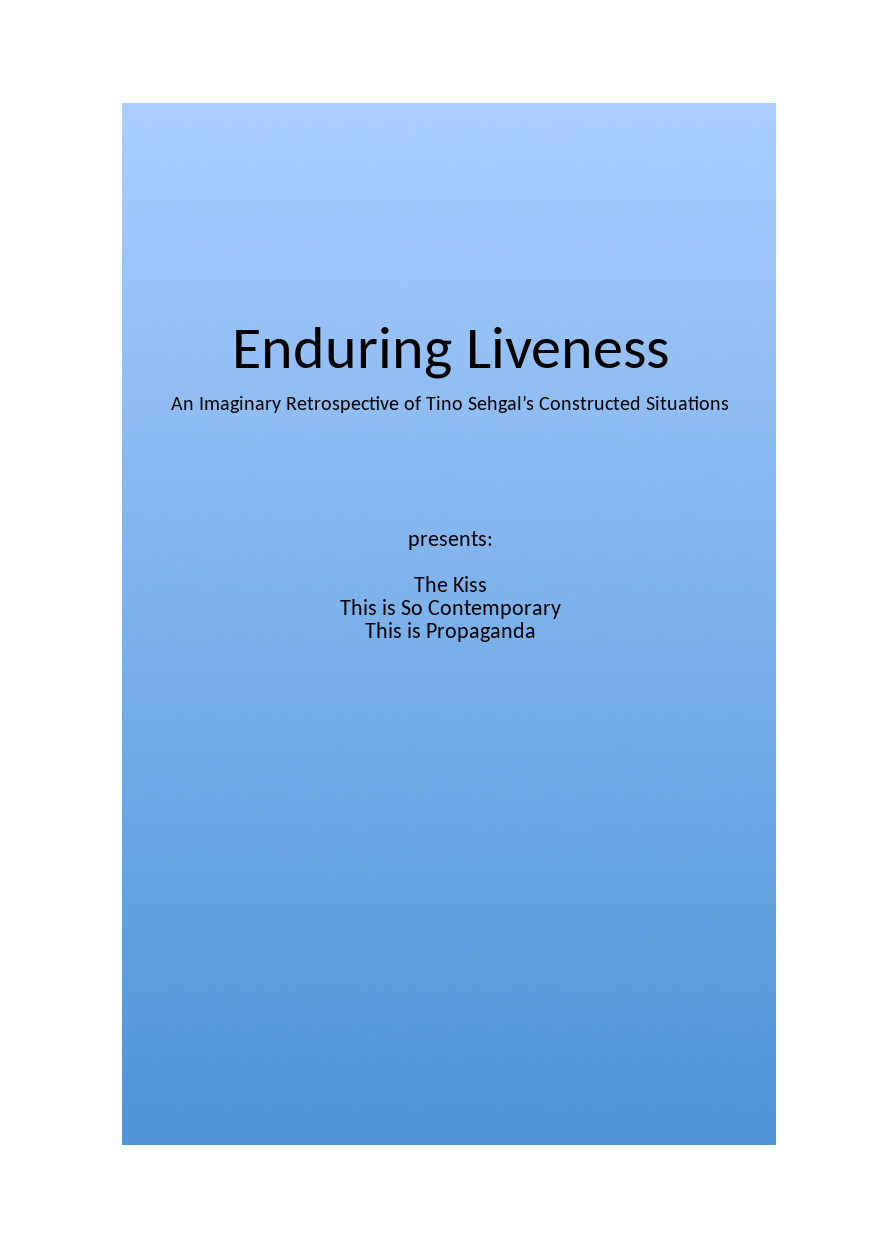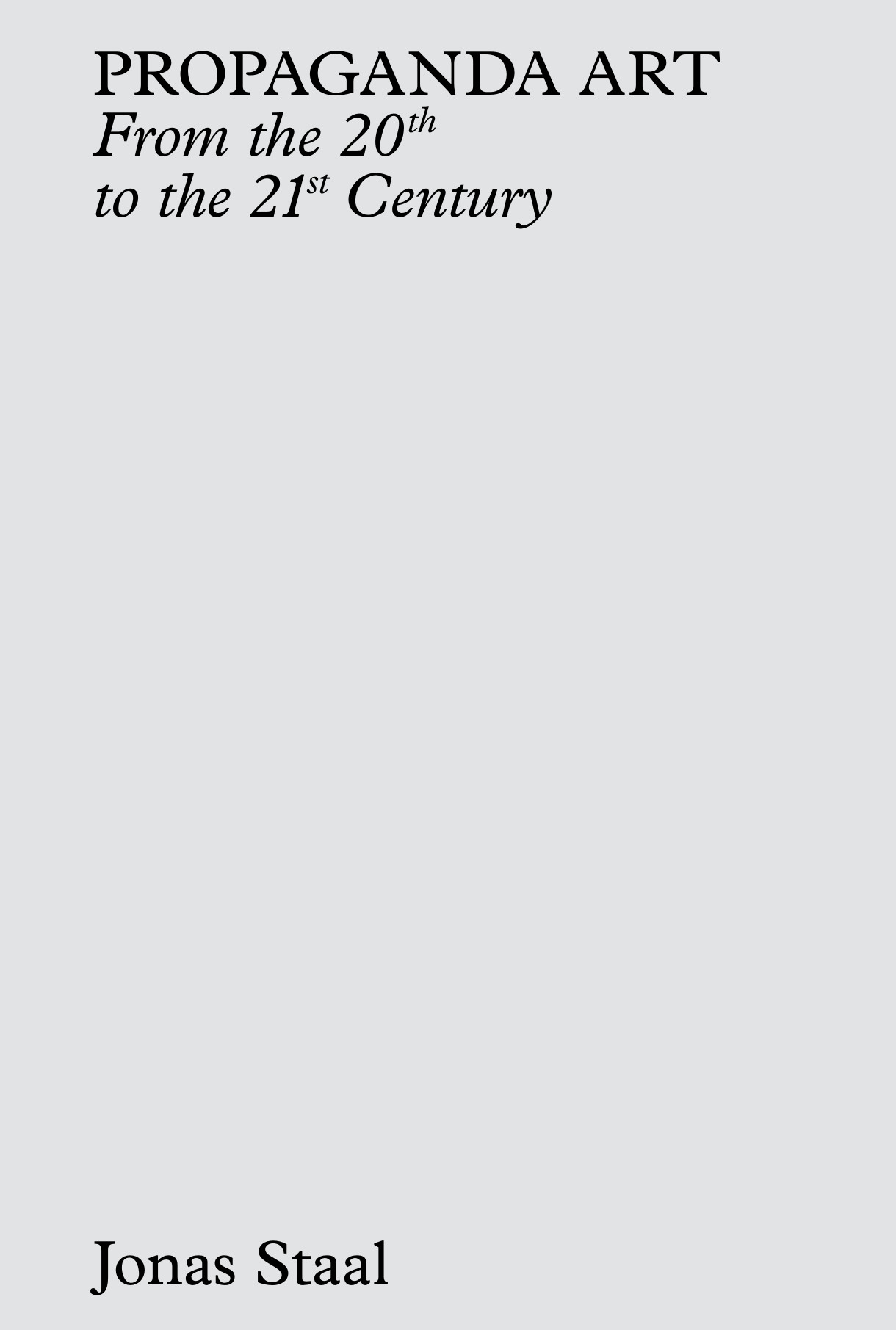Annet Dekker: Enduring Liveness: An Imaginary Retrospective of Tino Sehgal’s Constructed Situations (2018)
Filed under artist publishing | Tags: · art documentation, performance, performance art

“The key functions of a museum are the collection, presentation, preservation and education of cultural and artworks for the enjoyment of, and to educate, the public. Performance art has been notoriously difficult for museums to handle, despite the ‘easy’ presentation the non-materiality of the art form challenges the conventional methods and practices of a museum. Artist Tino Sehgal had added to these problems, persisting in having no documentation of his performances, or better his ‘constructed situations’, in whatever form or way. While several books and some catalogues are written about his work, none of them show visual representations of the actual performances.
While I sympathize with Sehgal’s aims and ideas, I’m also intrigued by the numerous ways in which documentation developed and expanded in the last two decades with more and more photos and videos appearing online. In this catalogue three perspectives are presented that open up the potential of documentation as a method to generate new articulations and ways of understanding, thinking and performing. Countering the “no photos allowed” from the press statements of the museums, with the documentation used by online news outlets and those created by visitors, the experience of being present at the performance can no longer be considered as a fixed or even final perspective. Instead the constructed situations continue to act through viewing, capturing and circulation. Navigating the various documents that are created idiosyncratically according to access (having a camera and an Internet connection) or choice (having the willingness or courage to take an image and change the rules), the Imaginary Retrospective of Tino Sehgal adds to what theatre and performance scholar Sarah Bay-Cheng beautifully describes as “a multi-valent experience that is shaped and constructed by the individual experiences, choices, and negotiations of all parties within a connected network of information, sensations, and varying access points” (2012). At the same time, it might open up a desire for new performance to emerge.”
Produced for Monoskop’s Exhibition Library in the 2018 Seoul Mediacity Biennale, 6 September–18 November 2018 at the Seoul Museum of Art.
Self-published in collaboration with Monoskop, Amsterdam, August 2018
89 pages
PDF (14 MB)
Comment (0)Jonas Staal: Propaganda Art from the 20th to the 21st Century (2018)
Filed under book, thesis | Tags: · art history, artistic research, avant-garde, democracy, modernism, performance, politics, power, propaganda, totalitarianism, war on terror

“This study by artist Jonas Staal explores the development of propaganda art from the 20th to the 21st century. Staal defines propaganda as the performance of power by means of the equation propaganda = power + performance. Through his work as a propaganda researcher and practice as a propaganda artist, he argues that different structures of power generate different forms of propaganda and therefore different forms of propaganda art. Whereas in the context of the 20th century Staal discusses the differences between avant-garde, totalitarian, and modernist propaganda art, in the 21st century he proposes the categories of War on Terror Propaganda Art, Popular Propaganda Art, and Stateless Propaganda Art. By means of concrete examples of artists and artworks within each of these categories, he attempts to show how the performance of power in the 21st century translates into different visual forms, and how they shape and direct our reality. Staal’s study shows that power and art exist in continuous interaction. Propaganda and propaganda art are not terms that only refer to the past, but concepts and practices through which we can understand the construction of reality in the present.”
PhD Dissertation, Faculty of Humanities, University of Leiden
Open access
425 pages
PDF, PDF (2 MB)
Video (12 min)
Kenneth Goldsmith: The Ideal Lecture: In Memory of David Antin (2018)
Filed under booklet | Tags: · affect, appropriation, art, internet, literature, performance, poetics, poetry

“This lecture premiered at The Louvre auditorium as part of FIAC’s public programs in October, 2017. To give it, I loaded the talk into a teleprompter program on my laptop. The linebreaks in the piece are a result of the way the teleprompter program broke them up in order to facilitate the reading of the work. Although I have never written lineated verse, I love the idea that a computer lineated the verse for me. This lecture, then, reads an awful lot like the way I talk, but it is truly nothing like the way I talk.”
Publisher Het Balanseer, Ghent, 2018
ISBN 9789079202522
62 pages

